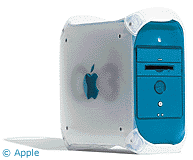When the Mac initially came out in 1984, there was one model of Mac, one version of the
System Software, ![The Macintosh]() only a few
peripherals, and hardly any software. But this changed as Microsoft
and other companies started bringing productivity software to the
Mac, and companies like ActiVision and Sierra started manufacturing
Mac games that required specific machine configurations.
only a few
peripherals, and hardly any software. But this changed as Microsoft
and other companies started bringing productivity software to the
Mac, and companies like ActiVision and Sierra started manufacturing
Mac games that required specific machine configurations.
Until about 1991, software that worked on one type of Mac would
work on pretty much any Mac. It was a little different for
hardware, though. The Mac SE and
II introduced a new type of port to the
Mac, the ADB port, which many manufacturers took advantage of for
joysticks, special keyboards, and other pointing devices.
In 1990, the Mac IIfx came out, and
suddenly some software started requiring a 68030 processor
to function.
In 1994, a new type of processor came to the Mac, the PowerPC.
This meant that for best performance, new software needed to be
written to take advantage of the PowerPC's features. Even the Mac
OS had to be reworked to run on the PowerPC - the first PowerPC
compatible release, 7.1.2, was more of a "consumer satisfaction"
release so that Apple could get Power Mac computers out the door.
It was full of bugs, and Apple really didn't get the Mac OS to run
decently on a PowerPC until 8.1 - three years later. [Editor's
note: Some of us had great luck with 7.5.x.]
By the time the G3 came out in November 1997, about 70% of the
software required a PowerPC processor. Right now,  about 99% requires a PowerPC, probably about
40% of that requires OS X, and about 60% of the total requires
at least a G3 to function decently.
about 99% requires a PowerPC, probably about
40% of that requires OS X, and about 60% of the total requires
at least a G3 to function decently.
How did we get from software that ran fine on an 8 MHz
Mac Plus to software that
requires a 300 MHz G3 just to perform
decently?
The obvious answer is that the new software has more features,
whether they are ones that you'll use or not. Most people probably
don't use more than 10% of what Microsoft Word has to offer - in
fact, Word 5 or 6 would probably be fine for them.
One thing people seem to forget is that newer OS versions often
require newer versions of software, and Word 6 simply doesn't run
inside of OS X. The same goes for ClarisWorks 4. In order to
get full compatibility with X, you must upgrade to Word X or
AppleWorks 6 - both have quite a few more features (most of which
you'll never use) and thus use more RAM, processing power, and hard
drive space.
The other thing that requires more CPU power is the interface.
Many users don't think about this, but it really became obvious
upon the release of OS X. People who were used to being able
to run the latest version of the classic Mac OS on their
five-year-old Mac suddenly found that the new OS required a
computer that was less than three years old. The main reason
was because the UI in Mac OS X needs the extra processing
power of the G3 processor, and the previous Macs just didn't have
enough power to handle it well. Mac OS X's Aqua interface has a
number of elements that require a fast processor - drop shadows,
solid/active window dragging and resizing, fading/translucent
menus, and the genie effect.
The other thing that makes software (Internet software,
specifically) require a faster computer is the changing status of
Internet technologies - older browsers don't support some of the
new technologies and standards, and some of these technologies
don't run well on older machines (Flash, for example), making Web
browsers and the Internet in general require faster machines in
order to be useable.
Not much can be done about it. In order to use some of the
latest software you really have no choice but to upgrade your OS -
or buy a newer machine, if your existing one won't run the
applications you want to use.
The other option is to stay with the software you are currently
running. Of course, this may mean not being able to take advantage
of newer technologies and possible welcome features in future
versions of the operating system.

 about 99% requires a PowerPC, probably about
40% of that requires OS X, and about 60% of the total requires
at least a G3 to function decently.
about 99% requires a PowerPC, probably about
40% of that requires OS X, and about 60% of the total requires
at least a G3 to function decently.
